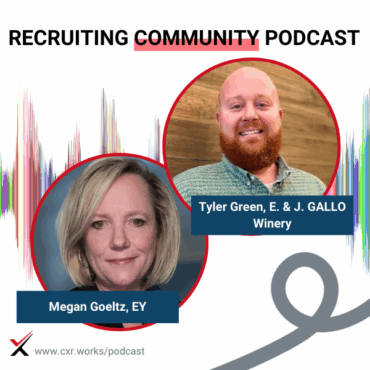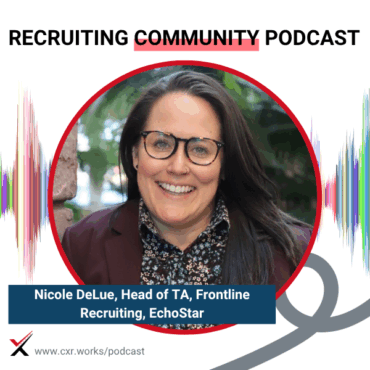
Quality of Hire and High-Volume Forecasting
What does quality of hire really mean for frontline recruiting? EchoStar’s Nicole DeLue breaks it down—data, empathy, and a fresh look at retention metrics.
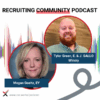 play_arrow
play_arrow
AI Interview Research Cami Grace
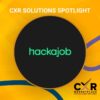 play_arrow
play_arrow
Solutions Spotlight on Hackajob Cami Grace
 play_arrow
play_arrow
A Headhunter Changed Everything: Rob Daugherty’s Career Crossroads Cami Grace
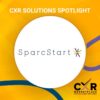 play_arrow
play_arrow
Solutions Spotlight on SparcStart Cami Grace
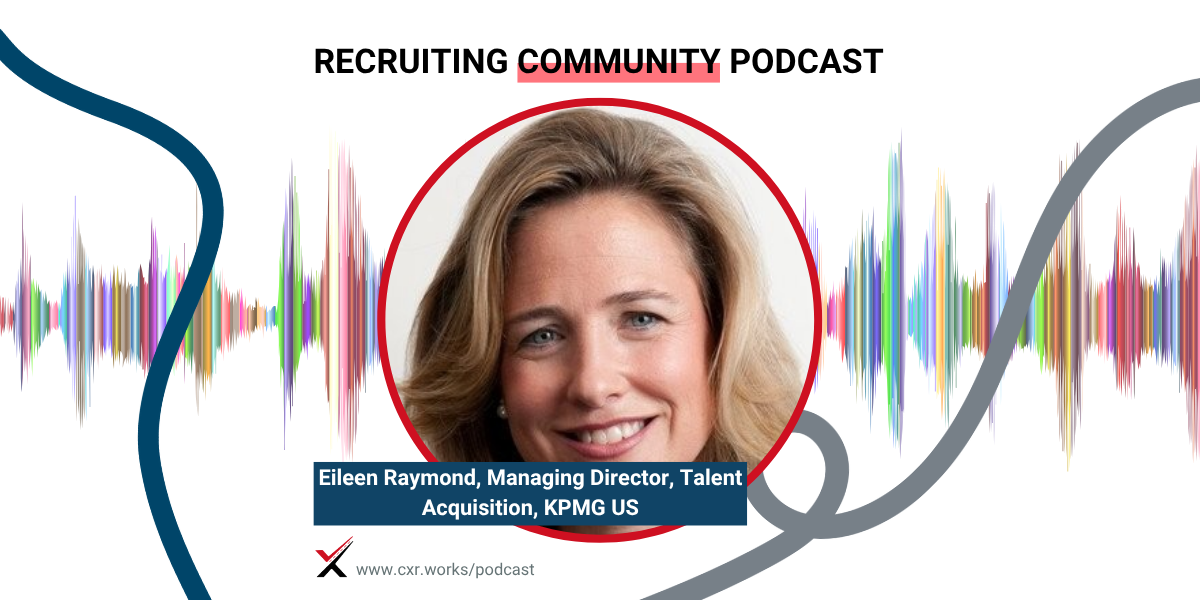
Career mobility is a hot topic, but implementing an internal movement strategy that works? That’s a whole different challenge. In this episode, we sit down with Eileen Raymond, Talent Acquisition Leader at KPMG, to discuss the power of internal mobility, the challenges of getting leadership buy-in, and the technology shaping the future of career transitions.
Eileen shares how KPMG has built a structured career counseling and internal mobility program that helps employees move within the organization rather than looking elsewhere. We also dive into AI, workforce planning, and the financial impact of retaining talent. If you’ve ever faced pushback from hiring managers or wondered how to create a seamless internal hiring process, this episode is packed with insights you don’t want to miss.
🕒 [3:10] – The importance of career mobility and how KPMG structures it
🕒 [8:45] – Why leaders resist internal movement—and how to overcome it
🕒 [14:30] – How career counseling helps employees navigate opportunities
🕒 [20:55] – The role of AI and automation in career mobility
🕒 [27:40] – The financial impact of retaining talent vs. external hiring
🕒 [33:15] – How data transparency can push organizations toward better mobility
📌 Connect with Eileen Raymond on LinkedIn
📌 Learn more about KPMG
📌 Explore more episodes at cxr.works/podcast
Title:
Building a Culture of Internal Career Mobility
Featured Guests:
Eileen Raymond – Talent Acquisition Leader (company not specified)
Hosts:
Chris Hoyt – President, CareerXroads
Gerry Crispin – Principal and Co-founder, CareerXroads
Episode Overview:
In this episode, Chris Hoyt and Gerry Crispin speak with Eileen Raymond about how internal career mobility has evolved at organizations like KPMG. Eileen shares her experience developing robust internal movement frameworks, the importance of career counseling programs, and the integration of technology and resource management to support employee growth. The discussion also highlights leadership buy-in challenges and how data-driven conversations have influenced change.
Key Topics:
Internal mobility strategy and its impact on retention
Career counseling programs and recruiter-led transitions
Leadership resistance and change management
Integration of talent systems (ATS, CRM, RM)
Use of AI tools like Sniper AI
Benchmarking and peer comparisons
Promoting internal mobility in campus recruiting
Calculating turnover costs and savings
Employee experience and upskilling
Notable Quotes:
“Talent acquisition is something I absolutely love—I’ve been in it my entire career.” – Eileen Raymond
“If it’s easier for someone to leave the firm than move internally, that’s a problem.” – Eileen Raymond
“We repurposed our recruiters… the feedback was incredible—we helped employees find jobs elsewhere.” – Eileen Raymond
“Career Mobility: Worth the Investment.” – Eileen Raymond
Takeaways:
Eileen Raymond emphasizes that creating a successful internal mobility program requires structured processes, leadership alignment, and consistent communication. By leveraging talent systems and embedding career counseling into the employee experience, companies can reduce turnover and promote long-term growth. The benefits extend beyond HR, fostering a firm-wide culture of development and retention.
Want more conversations like this?
Subscribe to the CXR podcast and explore how top talent leaders are shaping the future of recruiting. Learn more about the CareerXroads community at cxr.works.
Chris Hoyt: So Eileen, I hear you’re no longer in D.C., right? You’ve relocated a little further south, I understand?
Eileen Raymond: Yes, we relocated this past summer. My husband and I are empty nesters now—both of our children are in college. And yeah, we move quick. So in July, we decided to purchase a house in Longboat Key.
The special thing about Longboat Key is that it’s considered a safe haven for hurricanes. The local saying is that hundreds of years ago, Native Americans in the area used to come here to stay safe. But unfortunately, that’s no longer true. As you know, this past season—after we bought our house—we experienced two hurricanes.
I’m hoping that was a one-in-a-hundred-year event, but we fared very well. We got to meet a lot of people in the community, which really solidified our reason for wanting to move here. The people were fantastic. Everyone came together, helped each other, cleaned up. There’s still work to be done for some, but it really was a huge community effort. I was really pleased to be part of it and to see that happen.
Gerry Crispin: And they were building that community. I can just imagine the marketing guy going, “Now how can we sell this as special? Oh wait, we’re on a hill—we’re five feet above sea level! The safe place!”
Eileen Raymond: Yeah, well, we fell for it. But we did buy a house with a new roof and new windows, so that was a saving grace.
Chris Hoyt: I love that you got the hell out of Dodge when the kids left the house. My parents moved the day I left for the military. I feel like the first letter I sent home from basic training came back marked “return to sender”—they were gone!
Eileen Raymond: My kids were a little like, “Are we spending Thanksgiving at home? I want to go home.” And I was like, yeah, I guess we’ll have to figure that out. That’s okay.
Chris Hoyt: Be like, “That’s not my job anymore.”
Eileen Raymond: Exactly.
Chris Hoyt: You’re so much closer now to disposable income!
Eileen Raymond: Not yet, but almost. A couple more years.
Chris Hoyt: So close. Well, you’ve done your own mobility! And today we’re going to talk about mobility, so that’s a great segue.
Eileen Raymond: Thank you.
Chris Hoyt: Are we ready to get started?
Eileen Raymond: Yep, sounds good.
Chris Hoyt: Okay, here we go.
Announcer: Welcome to the Recruiting Community Podcast, the go-to channel for talent acquisition leaders and practitioners. This show is brought to you by CXR, a trusted community of thousands connecting the best minds in the industry to explore topics like attracting, engaging, and retaining top talent. Hosted by Chris Hoyt and Gerry Crispin. We are thrilled to have you join the conversation.
Chris Hoyt: What’d you think, Gerry?
Gerry Crispin: That’s a new one. A new bumper.
Chris Hoyt: I like the new bumper. Recognized it right away?
Gerry Crispin: I should hope so.
Chris Hoyt: I don’t care what anybody says, Gerry—you’ve still got all your faculties.
Gerry Crispin: Not a chance. I’ve lost three steps, but I still have a few left.
Chris Hoyt: I’m already crying—we’re two minutes in! Alright, welcome everybody. Whether you’re dialed in, on a treadmill, or whatever, this is the Recruiting Community Podcast. We’re bringing industry insights and updates in the form of a conversation, and it’s brought to you by the CXR, the CareerXroads community. This is a labor of love for us—we’re not making any money from this, it’s not a revenue tool, but we enjoy these conversations.
Today we’ve got a longtime industry friend with us—Eileen Raymond—and we’re going to talk about career mobility. Before we dive in, a few quick things: we’re streaming on YouTube, Facebook, LinkedIn, and Twitch. So if you’re watching on LinkedIn, drop a note in the comments—we’ll make sure to get back to you. If you have questions for our guest or for Gerry and me, we’ll answer those too.
If you’re interested in past episodes—we’ve got about 450 now—you can check those out at cxr.org/podcast. You can also see what’s coming up next there. Gerry, did I miss anything?
Gerry Crispin: No, although I am missing the QR code that usually covers my beard.
Chris Hoyt: You’re welcome.
Gerry Crispin: It adds some flair to the foundation message.
Chris Hoyt: For listeners, Gerry doesn’t actually wear a QR code in his beard—it’s a screen overlay sometimes promoting the CXR Foundation, which is a lot of fun.
Alright, let’s bring Eileen back in and put her in the big kid seat. Eileen, welcome back.
Eileen Raymond: Thank you. Good afternoon.
Chris Hoyt: Let’s jump in with a quick elevator pitch. Who is Eileen? I know we’ve known you since your time at KPMG, but you’ve also been at SRA, BaringPoint, Accenture—you’re no stranger to talent acquisition. Give us a quick snapshot.
Eileen Raymond: Talent acquisition is something I absolutely love—I’ve been in it my entire career. I see it more as a sales and branding role than an HR role. It’s such a dynamic space—it’s always changing: the industry, the marketplace, the technology.
It’s a space where creative thinking and trying new things really thrive. Honestly, I see myself staying in this field for my entire career. It never stops changing. Especially now with everything going on—from government and politics to AI and tech—it’s coming at us fast. Really interesting times.
Chris Hoyt: Do you feel like, even though things change constantly, a lot of the challenges we face as talent professionals stay the same? Like, I remember at AT&T back in 2004 or 2005, we talked about building an internal recruiting team, and people were shocked. It was like heresy to suggest recruiting internally. And now, nearly 30 years later, we’re still dealing with that.
Eileen Raymond: Absolutely. Some organizations are more mature than others. You sit in a meeting and someone’s just now implementing an ATS or an employee referral program and you’re thinking, “What were you doing before?” But everyone’s on their own journey.
Having been in the industry this long helps me keep perspective. I don’t get upset when people make questionable decisions—I try to play the business advisor role. I guess I’ve tempered with age.
Gerry Crispin: I love that. What’s the term for wine as it matures? It gets finer with age?
Eileen Raymond: Exactly—we’re all aging well in our respective bottles!
Chris Hoyt: So when you talk about internal mobility, what does that mean at KPMG? What’s the scope?
Eileen Raymond: Ideally, it means that people can come into the organization in one role—say, audit—and then, after a year or two, if they want to try something else, they can move to advisory or another business unit. We want the infrastructure, policies, and processes in place so employees can see and pursue those opportunities. That includes the posting, interviewing, and transfer process—it’s all mapped out to support them.
Chris Hoyt: And how is that communicated? Is it just a resource that’s there, or do you actively promote it?
Eileen Raymond: It ebbs and flows. When the market’s hot, we brand and promote it. But yes, there is internal angst sometimes—partners worry about losing people they’ve trained. We’ve made progress, though. Over the years, our partners have realized that if they don’t support internal mobility, people will leave. Better to retain them in the firm.
We also brand this with campus recruits—something we’ve done for over 10 years. Many competitors are just starting to catch up on that.
We also have a counseling component. When someone joins, they have discussions not just about moving now, but planning for the future—what skills to develop, who to network with, what to think about.
Gerry Crispin: You have full-time counselors for this?
Eileen Raymond: Yes.
Chris Hoyt: Jerry, we predicted that years ago—a return of the career services center for internal growth. Eileen, when did that start?
Eileen Raymond: Over 10 years ago. During a recession, we had to do a reduction in force and were paying a vendor for outplacement support that wasn’t great. Instead, we repurposed our recruiters to do it. The feedback was incredible—we helped employees find jobs elsewhere.
So we took that internal, and the rest is history. We now have thousands of employees in the program at any given time, dedicated resources for counseling, and we handle full-time transfers and rotations.
It’s been a huge morale booster and has saved millions in turnover costs. We estimate a $30,000 cost per departure, so retaining hundreds of employees adds up fast.
Gerry Crispin: Are there any organizations or conferences that really focus on this kind of internal mobility? Somewhere to benchmark or find innovation?
Eileen Raymond: I’ve talked to folks like Marie at Enterprise—her company is built around mobility. There are definitely some models out there, like Procter & Gamble. But you’re right—there’s a lack of centralized benchmarking.
Chris Hoyt: Is AI playing a role yet?
Eileen Raymond: We’re working on it. We’re talking to Sniper AI. Right now, we’re leveraging our ATS and CRM (we use Avature). We’re also integrating more with our resource management (RM) team—those who handle engagement assignments.
That connection helps us track upskilling. If someone completes a rotation—for example, on a Workday implementation—we can reflect that in the RM system. It’s a work in progress, but critical for workforce planning.
Chris Hoyt: One of the biggest challenges we hear is getting buy-in from the business. Leaders say, “That’s my talent, you can’t have them.” How do you overcome that?
Eileen Raymond: We still face that. Some leaders will say, “Sure, they can move—six months from now.” But we focus on this: if it’s easier for someone to leave the firm than move internally, that’s a problem. And replacing someone externally is costly.
You have to do what’s right for the firm. And the data helps—our partners are numbers people.
Gerry Crispin: PepsiCo used to publish internal mobility data by division—transfers, departures, broken down by race, gender, age. Then they rank-ordered divisions to show progress. Some leaders didn’t like being at the bottom, but it moved the needle.
Eileen Raymond: That’s fantastic. I had to get comfortable with that as a leader. I’ve lost many people from my recruiting team to other roles—but now I have hundreds of former team members across KPMG. It’s a great network and speaks volumes.
Chris Hoyt: And I’m sure some people have come into your team, too?
Eileen Raymond: Absolutely. We recruit from the business all the time—especially folks who want to get off the road. They make great recruiters because they’ve lived the experience.
Chris Hoyt: Eileen, before we let you go, we ask everyone: if you were going to write a book about this topic, what would the title be?
Eileen Raymond: Career Mobility: Worth the Investment.
Chris Hoyt: Who would get the first signed copy?
Eileen Raymond: Probably our CEO or vice chairman.
Chris Hoyt: Smart answer. Eileen, it’s always a pleasure. Thank you so much for your time and for sharing your insight.
Eileen Raymond: Thank you. Glad to be here.
Chris Hoyt: Take care, everybody.
Announcer: Thanks for listening to the Recruiting Community Podcast, where talent acquisition leaders connect, learn, and grow together. Be sure to visit cxr.works/podcast to explore past episodes, see what’s coming up next, and find out how you can join the conversation. We’ll catch you in the next episode.
Tagged as: Leadership, employee engagement.
Chris Hoyt is the President of CareerXroads, a global peer community for talent acquisition leaders driving strategic change. With decades of experience leading recruiting innovation at Fortune 500 companies, Chris now advises enterprise TA teams on tech, process, and leadership. He’s a frequent speaker at conferences like SHRM, HR Tech, LinkedIn, and UNLEASH, and he’s known for pushing conversations beyond buzzwords to get to what really works in hiring. Through CXR, he connects top TA professionals to solve real problems, challenge norms, and shape the future of recruiting.

What does quality of hire really mean for frontline recruiting? EchoStar’s Nicole DeLue breaks it down—data, empathy, and a fresh look at retention metrics.
